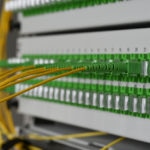- Security-related (you may have suffered a major intrusion or breach)
- Operator error (I’ve seen a DC go dark during generator testing because someone forgot to check the fuel levels)
- Software faults (there are many horror stories of firmware updates taking out core platforms)
This is a Disaster! Knowing When to Call It

Disasters come in many forms. I’ve walked in on my daughters when they were younger and doing craft things in their bedroom and said “this is a disaster!” When it comes to serious events though, most people think of natural disasters, like floods or earthquakes. But a disaster can also be defined as an event that has a serious impact on your infrastructure or business operations. It could be any of the following events:







